



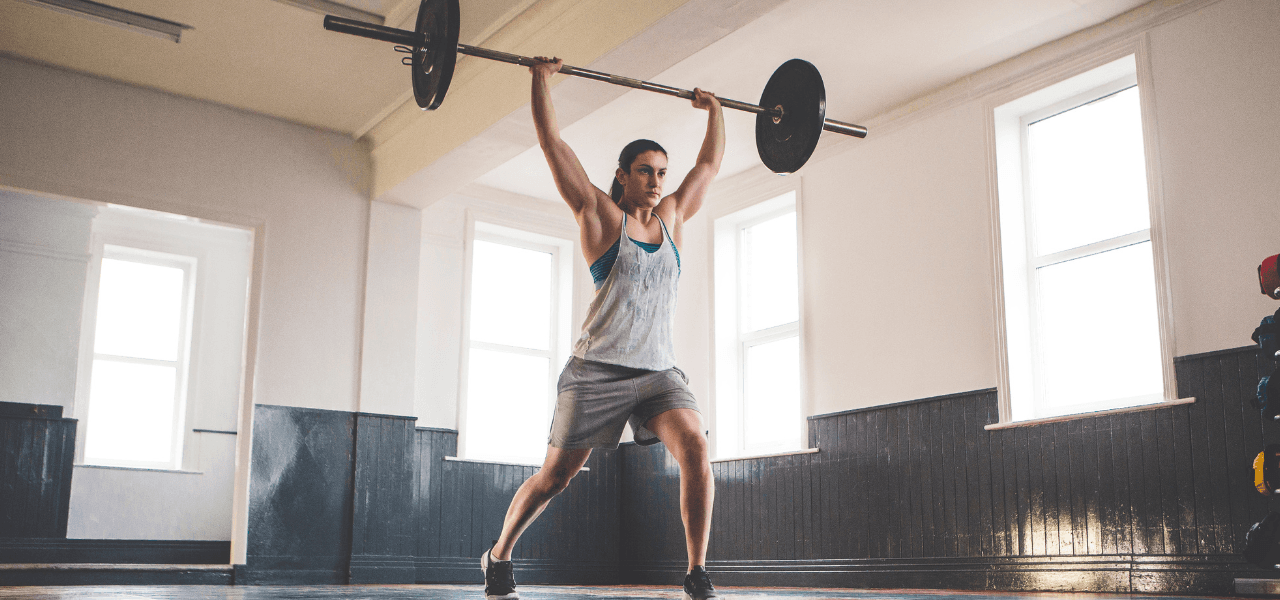
The overhead press is a go-to move in strength training, and for good reason! It’s a powerhouse exercise that builds serious upper body strength, keeps your shoulders happy and healthy, and the overhead press muscles work to make life easier.
In this guide, we’ll break down everything you need to know about this classic lift for a shoulder workout and more—how it works, which muscles it targets, why it’s worth your time, and a few fun variations to keep things fresh. Plus, we’ll share some pro tips to help you crush it safely and effectively!
What is the Overhead Press?
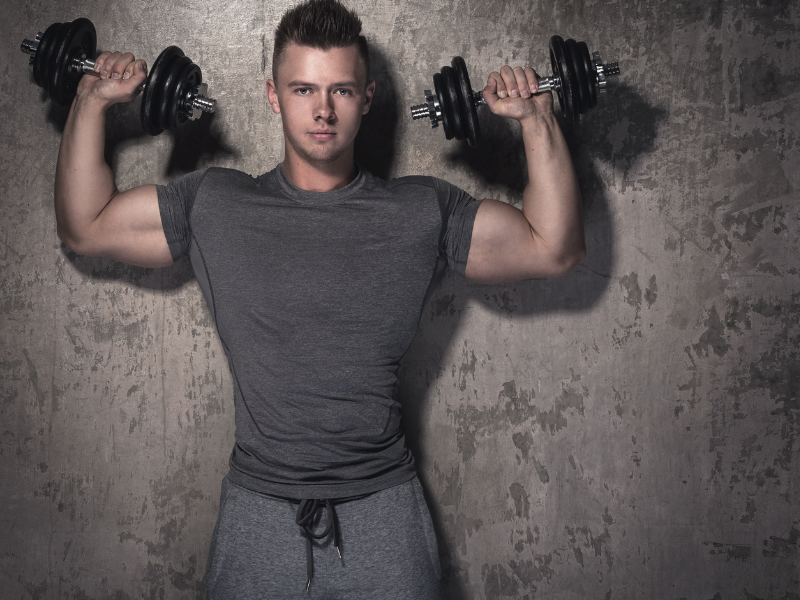
The overhead press—also called the shoulder press, military press, or strict press—is a strength-training staple. At its core, it’s a compound movement where you press a weight overhead, working a variety of upper body muscles in one powerful motion.
This versatile exercise can be performed using various equipment, such as barbells, dumbbells, kettlebells, or machines, providing flexibility depending on your fitness goals and level. It’s a champ for building upper body strength, boosting stability, and promoting muscle hypertrophy (growth).
You may also like:
Top 8 Dumbbell Shoulder Exercises for Strength and Muscle Building
The Best Rear Delt Exercises for Stronger Shoulders
So, while the overhead press is mainly a shoulder builder, it’s also a fantastic compound movement that strengthens your back. The specific muscles worked can vary depending on the variation of the press, the equipment you’re using, and your individual body mechanics.

How to Do the Overhead Press?
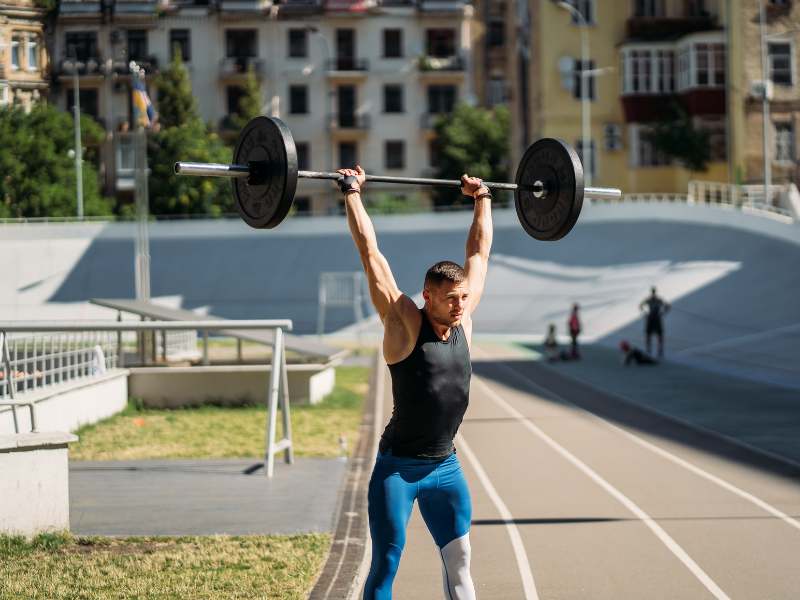
Performing the overhead press with proper technique is crucial for maximizing results and minimizing the risk of injury.
Here’s a step-by-step guide to performing the overhead press:
- Starting Position: Stand tall with your feet shoulder-width apart, gripping a barbell slightly wider than your feet spacing. Rest the bar across your upper chest, just below your chin. Prefer dumbbells? Hold one in each hand at shoulder height, palms facing forward.
- Core Engagement: Engage your core muscles by bracing your abdominals as if you were about to be hit in the stomach. This will help stabilize your spine throughout the lift and prevent unwanted movement.
- Upward Press: Keeping your core engaged and maintaining a neutral spine, press the weight straight up overhead by extending your arms. Avoid locking out your elbows at the top of the movement to keep the tension on your muscles.
- Controlled Descent: Lower the weight slowly and with control throughout, returning to the starting position. No crashing—control is key!
- Repeat: Repeat the movement for the desired number of repetitions.
Tips:
- Kickstart the upward motion by gently shrugging your shoulders toward your ears before pressing the weight. This fires up your upper back and adds stability to the lift.
- If you are using heavy weights, play it safe with a spotter, especially for the barbell overhead press.
Muscles Worked by the Overhead Press

The overhead press engages a complex interplay of muscles, contributing to its effectiveness in building upper body strength and size. Let’s understand the role of each muscle group so that we can optimize your technique and maximize results. Exercises like the close-grip bench press can also work the same muscles, providing variety and helping to prevent overuse injuries. So how do the overhead press muscles work?
Primary Muscles Worked
- Deltoids (Shoulders): The primary target of the overhead press, the deltoids are activated in all three heads—anterior (front), lateral (middle), and posterior (rear). The anterior deltoid is particularly engaged when pressing the weight overhead [2].
- Triceps: The triceps, located at the back of the upper arm, allow you to extend the elbow, working alongside the deltoids to complete the pressing motion.
Secondary Muscles Worked
- Trapezius: The upper portion of the trapezius plays a crucial role in stabilizing the shoulder blades and supporting the overhead position.
- Pectoralis Major (Upper Chest): The upper chest (clavicular head) assists in pressing the weight and helps stabilize the shoulder joint during the lift.
- Serratus Anterior (Side Chest): These muscles help stabilize the shoulder blades, enabling proper shoulder alignment as you raise the weight.
- Core Muscles: A host of abdominal muscles are activated to stabilize the spine, especially in standing variations of the press.
For more shoulder workouts:
Benefits of the Overhead Press

The overhead press is a staple exercise that delivers a ton of benefits—whether you’re aiming for more strength, muscle growth, or overall fitness. Here are some of the main ones:
- Increases Upper Body Strength efficiently: Looking to get stronger without wasting time? The overhead press is one of the best compound exercises for hitting the shoulders, triceps, upper back, and chest all at once. These exercises are time-efficient, and multiple overhead press muscles work in a single move.
- Improves Shoulder Stability and Mobility: The overhead press doesn’t just strengthen muscles—it also promotes shoulder health. By pushing through a full range of motion, this move keeps your shoulders flexible and stable, helping you avoid injuries [3].
- Enhances Core Strength and Stability: When you press overhead while standing, your core has to work overtime to keep you balanced and steady. This means the overhead press is a sneaky way to boost core strength, which not only improves your posture but can also reduce your chances of lower back pain.
- Increases Muscle Mass (Hypertrophy): When the level of resistance or weight is increased over a period of time, this can lead to muscle hypertrophy, or in other words, muscle growth [4]. The overhead press stimulates muscle growth (hypertrophy) in the shoulders, triceps, upper back, and chest.
Overhead Press Variations
The overhead press is a versatile exercise that can be modified in numerous ways to cater to different fitness levels, target specific muscles more effectively, and add variety to your training routine.
Standing Barbell Overhead Press:
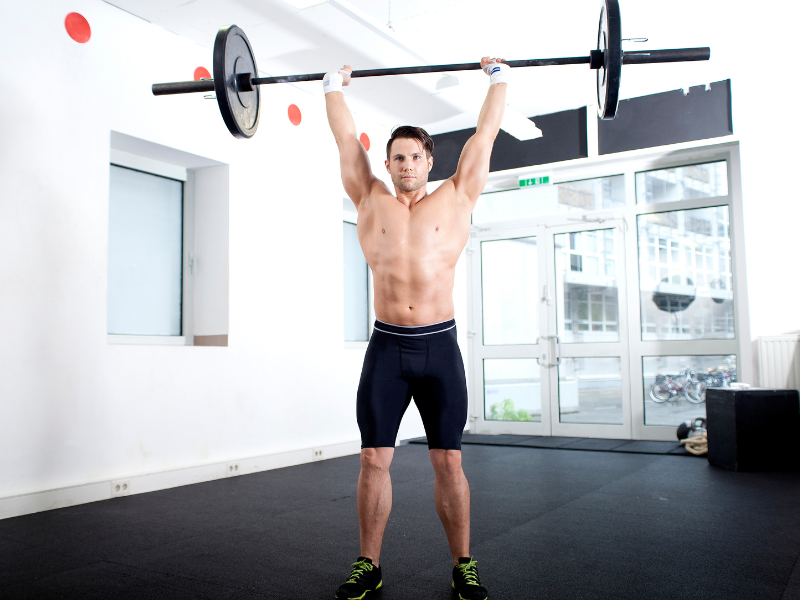
The standing overhead press is a classic variation of the overhead press, typically performed with a barbell while standing. This exercise is highly effective for building overall upper body strength and stability. The standing overhead press engages multiple muscle groups and allows for lifting heavier weights compared to dumbbell variations, especially the shoulder muscles, as the barbell allows for more control. Using the barbell also has been shown to cause more muscle excitation compared to using a machine [5].
Seated Overhead Press:
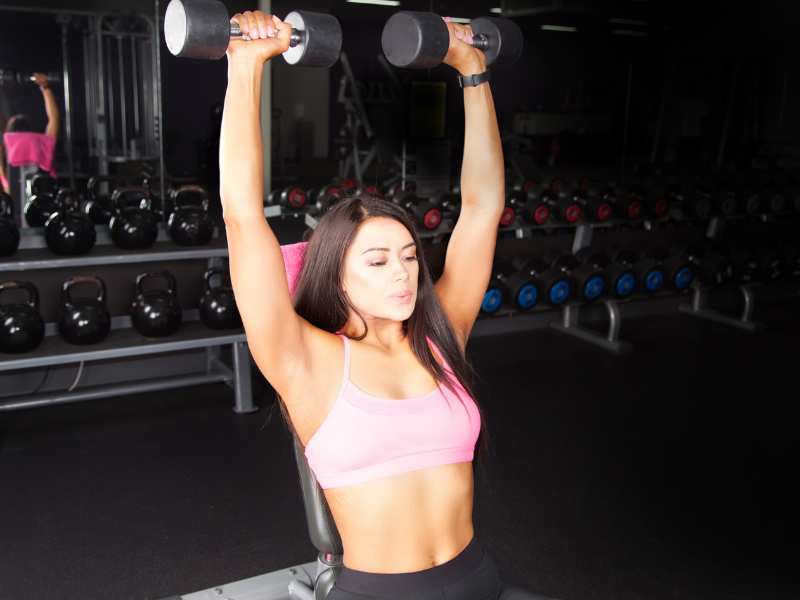
Performed while sitting on a bench with back support, the seated overhead press or the seated dumbbell overhead press allows for a greater range of motion compared to the barbell variation, and may be more comfortable for individuals with lower back issues. This variation targets the shoulders more directly and requires greater control and stability due to the use of two independent weights.
Push Press:
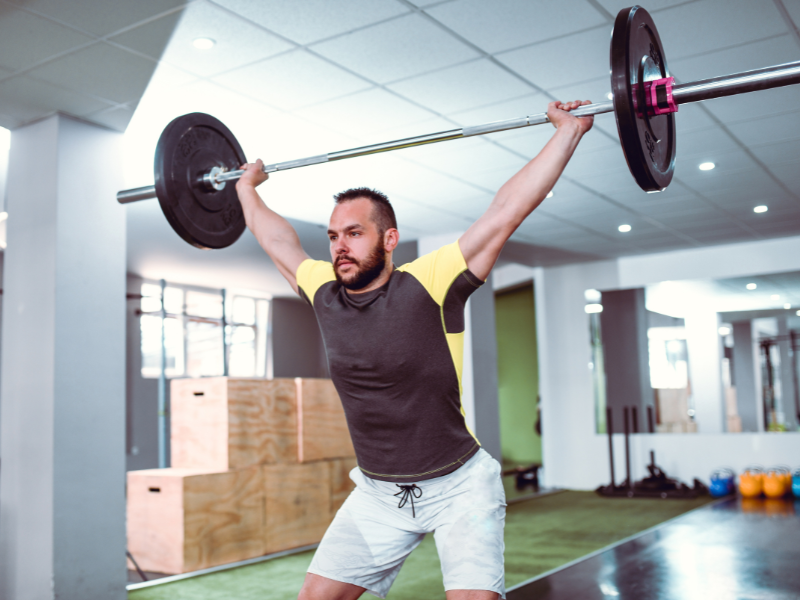
A more explosive variation of the overhead press that incorporates leg drive to help lift heavier weights. It targets the shoulders, triceps, and legs, building power and strength. This variation can help improve various athletic and functional movements, such as jumping, throwing, and lifting heavy objects onto shelves or into luggage compartments [6].
Kettlebell Overhead Press:
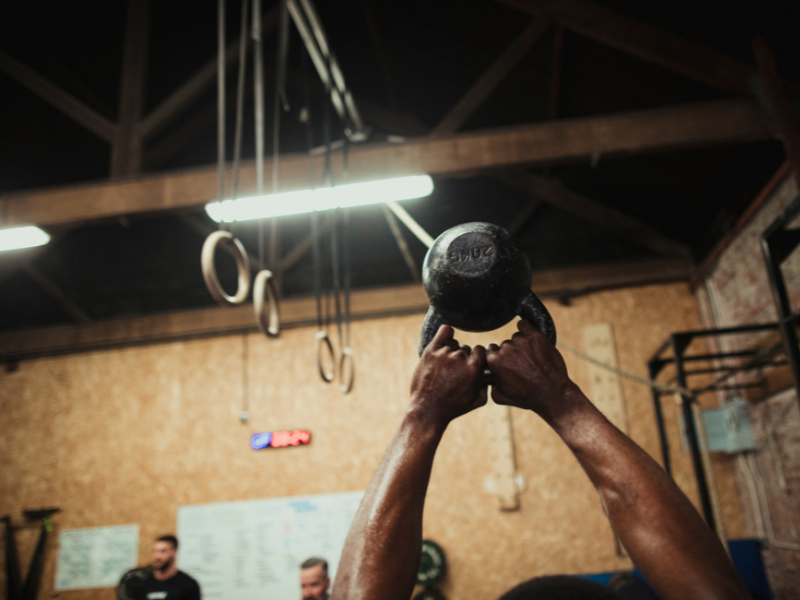
Using kettlebells introduces an off-center weight distribution, which forces greater core engagement and promotes functional strength. It’s a great variation for improving grip strength and challenging core stability, enhancing overall functional fitness.
Training and Programming
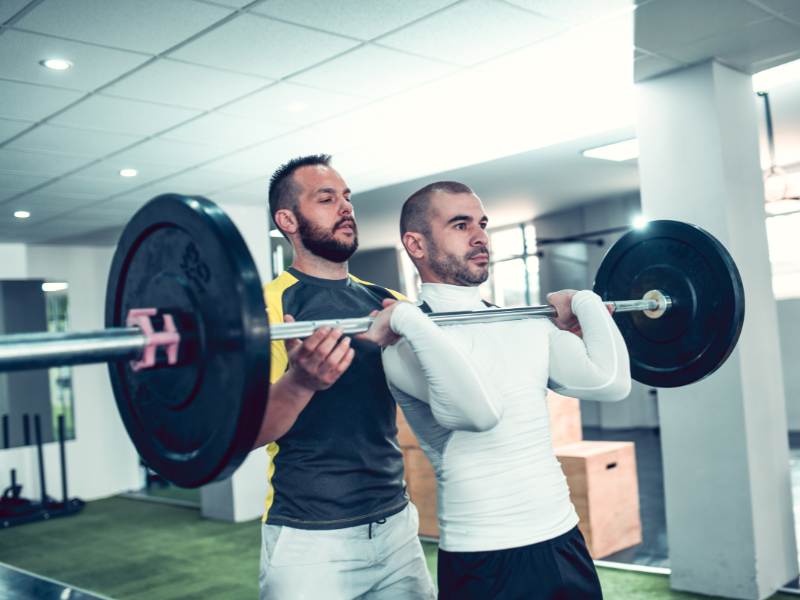
Integrating the overhead press into your training program involves considering your fitness level, goals, and overall program structure.
Here are some general guidelines for training and programming the overhead press:
- Frequency:
Aim for 2-3 times per week, with adequate rest between sessions to allow for muscle recovery. - Sets and Reps:
- Strength: Low reps (2-6) with more sets and longer rest.
- Hypertrophy: Moderate reps (6-12) with rest in between sets.
- Endurance: High reps (12-20) and shorter rest.
- Weight Selection: Choose a weight that challenges you but allows you to maintain proper form throughout the entire set. Start with a lighter weight and gradually increase as you get stronger.
- Progressive Overload: To continuously challenge and for the overhead press muscles to work and promote growth, gradually increase the weight, repetitions, or sets over time.
- Warm-Up: Before starting your overhead press workout, perform a thorough warm-up to prepare your muscles and joints for the exercise. Include dynamic stretches, such as arm circles, shoulder rotations, and torso twists, as well as lighter sets with progressively heavier weights.
- Rest and Recovery: Allow sufficient rest between sets and workouts for optimal muscle recovery and growth. Aim for 2-3 minutes of rest between sets and 48-72 hours of rest between overhead press workouts.
You may also like:
Is It Better to Do Cardio Before or After Weights? Learn About Expert Opinions
Should You Workout When Sore? Everything You Need To Know About It
• Establish a Solid Foundation: Before initiating the lift, ensure a stable base by positioning your feet shoulder-width apart or slightly wider.
• Maintain Spinal Integrity: Throughout the exercise, prioritize a neutral spine. Engage your core muscles and slightly tuck your pelvis to prevent excessive arching in the lower back.
• Control the Bar Path: Aim for a straight, vertical bar path. Any deviation forward or backward can compromise shoulder stability and reduce efficiency.

Conclusion
To wrap up, the overhead press is a must-do exercise for developing upper body strength, improving shoulder health, and enhancing overall functional fitness. By understanding its mechanics, how the overhead press muscles work, and how to incorporate it effectively into your workout routine, you can unlock your full strength potential and make significant gains. For more such tips for an efficient workout session, check out the JustFit app!
What muscles do overhead press work?
What are the benefits of an overhead press?
Why is the overhead press so difficult?
What is the difference between overhead press and push press?
Coratella, G., Tornatore, G., Longo, S., Esposito, F., & Cè, E. (2022). Front vs Back and Barbell vs Machine Overhead Press: An Electromyographic Analysis and Implications For Resistance Training. Frontiers in physiology, 13, 825880. https://doi.org/10.3389/fphys.2022.825880
Deltoid muscles: What are they, anatomy, Location & Function. Cleveland Clinic. (2024c, May 1). Available at: https://my.clevelandclinic.org/health/body/21875-deltoid-muscles
Increasing your mobility with overhead press exercises. MAGMA Fitness. (2023, March 3). Available at: https://magmafitness.ca/blogs/magma-blog/increasing-your-mobility-with-overhead-press-exercises?srsltid=AfmBOoqCSoJd3byUJ8zJIDNzeNCSbMdcEznmK1rqKkL5kiB5owq4CcOU
MediLexicon International. (n.d.-a). Building muscle with exercise: How muscle builds, routines, and Diet. Medical News Today. Available at: https://www.medicalnewstoday.com/articles/319151#how-does-muscle-grow-in-the-body
Ronai, Peter M.S., FACSM, ACSM-CEP, ACSM-EP, EIM-III, CSCS. The Push Press Exercise. ACSM's Health & Fitness Journal 26(4):p 33-38, 7/8 2022. | DOI: 10.1249/FIT.0000000000000787. Available at: https://journals.lww.com/acsm-healthfitness/fulltext/2022/07000/the_push_press_exercise.11.aspx
Why does my trapezius muscle hurt?. Cleveland Clinic. (2024h, September 26). Available at: https://my.clevelandclinic.org/health/body/21563-trapezius-muscle





